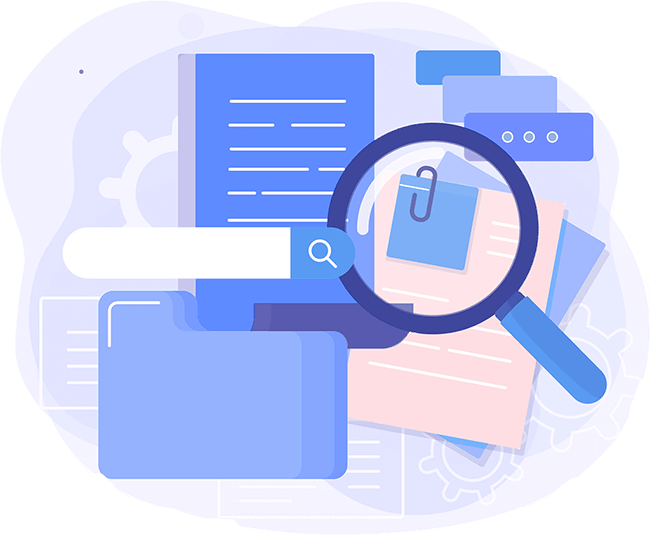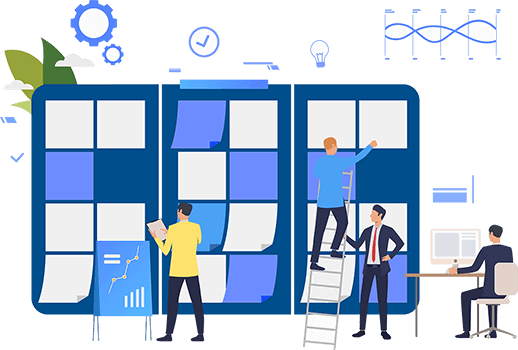Introduction
A service is “any act or performance that one party can offer to another that is essentially intangible and does not result in the ownership of anything. Its production may or may not be tied to a physical product (Kotler, 2000, p. 200)”. Furthermore, service marketing can be defined as “the marketing of activities and processes rather than objects” (Solomon, et al., 1985, p. 106). As services are mainly intangible products, they “face a host of services marketing problems that are not always adequately solved by traditional goods-related marketing solutions” (Hoffman & Bateson, 2010, p. 5).
Get Help With Your Essay
If you need assistance with writing your essay, our professional essay writing service is here to help!
Essay Writing Service
Service quality is “a measure of how well the service level delivered matches customer expectations. Delivering quality service means conforming to customer expectations on a consistent basis” (Parasuraman, et al., 1985, p. 42). Due to these problems, there are a variety of new conceptual frameworks to monitor service quality. Some of these methods are completely new creations, whereas other good-based frameworks were merely extended to be applicable towards service quality.
This report will explore several service marketing and quality frameworks, including; service marketing mix (7Ps), SERVQUAL the services marketing triangle and service dominant logic. These different methods of measuring service marketing and quality will be critically evaluated using a variety of academic theory.
7Ps and Service Marketing Mix
The 7Ps and service marketing mix is a great framework used to analyse the performance of service marketing and the quality that a company has to offer. The service marketing mix used to consist of the 4Ps (Gronroos, 1994). These were (Booms & Bitner, 1981):
Product: Quality, brand name, service line, warranty, capabilities, facilitating goods, tangible clues, price, personnel, physical environment and process of service delivery.
Price: Level, discounts and allowances, payment terms, customers own perceived value, quality/price interaction and differentiation.
Place: Location, accessibility, distribution channels and distribution coverage.
Promotion: Advertisements, personal selling, sales promotion, publicity, personnel, physical environment, facilitating goods, tangible clues and process of service delivery.
However, this was later expanded on to form the 7Ps. This is because there was a higher degree of interdependence between buyers and sellers, meaning the marketing mix had to take into account buyer-seller relationships (Webster, 1984). The three extra factors to conclude the service marketing mix are (Booms & Bitner, 1981):
Participants: Personnel training, discretion, commitment, incentives, appearance, interpersonal behaviour, attitudes and customer behaviour/degree of involvement.
Process: Policies, procedures, mechanisation, employee discretion, customer involvement, customer direction and flow of activities.
Physical Evidence: Environment, furnishings, colour, layout, noise level, facilitating goods and tangible clues.
The addition of these extra three factors helped make the 7Ps a much more comprehensive framework for service marketing. Furthermore, it offers a broader perspective of service marketing, with more refined results. However, all frameworks come with some weaknesses, and the service marketing mix can sometimes be too complicated to companies or marketers. Furthermore, some academics will suggest that the extra elements can already be covered by the 4Ps, thus making them redundant, and also that it is hard to control and monitor the additional elements (Rafiq & Ahmed, 1995).
The original four factors of the marketing mix are widely known and used throughout all facets of marketing, but the modern additions give a new flavour to service marketing. This pays particular attention to ‘participants’ as it includes all employees and consumers that have an effect on service quality. However, processes and physical environment still have a big influence, as they monitor the environment and the ways in which an employee or company deliver service.
Service Dominant Logic
Service dominant (S-D) logic “superordinate’s service (the process of providing benefit) to products (units of output that are sometimes used in the process)” (Lusch, et al., 2007, p. 6). Furthermore, service dominant logic is thought to be grounded by nine fundamental factors.
Figure 1 – (Vargo & Lusch, 2006)
The presiding view of S-D logic is that customers should be viewed as an “operate resource”, which is a resource that can act with other resources, thus co-creating value (Lusch, et al., 2007, p. 6). Furthermore, collaboration between the organisation and their consumers allows for a strong bond to form between S-D logic and the 7Ps.
S-D logic was formed to recognise the importance of service marketing, and lay a new foundation over the outdated goods-dominated logic. With value being created in new ways, and consumers valuing the service encounter, organisations must create value for their services. Furthermore, there is no goods vs services in S-D logic, as it recognises goods as an ‘appliance’ used in the service encounter (Lusch & Vargo, 2006).
Although S-D logic provides many benefits for an organisation, there have been a variety of academics that criticise the approach. The majority of scholars (Groonos, 2006; Achrol & Kotler, 2006) point out that interaction and networks play a more imperative role in value creation, something that S-D logic does not take into account. However, Lusch & Vargo (2006) insist that S-D logic does take into account interaction and networks, as it believe value creation is the process of integrating and transforming resources which implies interaction between networks.
SERVQUAL
SERVQUAL is a service quality framework developed to measure the scale of quality provided by a service a company has to offer. It was composed by Parasuraman, Zeithaml & Berry through a series of publications in the 1980s and early 1990s (Buttle, 1995). Its aim was to compare customer’s perceptions with their expectations of a service. It its original formulation, SERVQUAL was composed of ten factors for analysing service quality. These were; reliability, responsiveness, competence, access, courtesy, communication, credibility, security, understanding and tangibles (Parasuraman, et al., 1985). However, they collapsed these components into five main factors, which would constitute the modern understanding of SERVQUAL or RATER. These factors are (Iwaardan, et al., 2003):
Reliability: Doing what is promised and doing it at the right time.
Assurance: One of the most significant factors of assurance, is a company that has the required knowledge to answer questions.
Tangibles: Up to date equipment, physical facilities and materials are visually appealing.
Empathy: A company’s communication with consumers, usually in the form of human interactions. Giving care to each individually personally.
Responsiveness: Most significant part of responsiveness is giving a prompt service.
There have been many criticisms about the long-term stability of the results that SERVQUAL can provide (Lam & Woo, 1997; Crosby & LeMay, 1998). This is in special attention to the applicability of all of the five factors mentioned above. Furthermore, Cronin & Taylor (1994) argue that service quality should not be strictly categorised into five different factors, but should be measured using whatever means are applicable to the situation. On top of this, Buttle (1995, p. 10) states that “SERVQUAL has been subjected to a number of theoretical and operational criticisms”. These are;
Theoretical:
SERVQUAL is based on a disconfirmation paradigm, and not an attitudinal paradigm.
Little evidence that consumers assess service quality using the five factors.
Focus heavily on the process of service quality, and not the outcomes
Operational:
Consumers generally use standards instead of expectations to measure service quality.
The five factors cannot cover the variability of service quality.
Consumer quality perceptions are very versatile, and can change quickly.
Although SERVQUAL does have several criticisms, it also has many practical applications. Wisniewski (2001) outlines some of the applications where SERVQUAL can be used. Understanding current service quality is the predominant use of SERVQUAL. This is because it allows managers to assess the current service, and monitor any gaps that exist. SERVQUAL can also highlight how different consumers perceive quality for the different services a company has to offer. Overall, it is a comprehensive framework that helps a company analyse the gap in service quality, and can help a manager decide on appropriate strategies to increase service quality.
Furthermore, SERVQUAL supplements the 7Ps service marketing mix well. This is because it allows the company to gather data from consumers, which they can tailor specifically to one of more of the 7Ps. Measuring the 7Ps through a SERVQUAL framework will allow a company to monitor where they are offering positive service quality, and where their service quality is lacking.
Services Marketing Triangle
Similarly to the services marketing mix, the services marketing triangle was created to handle the complexity that service marketers face when dealing with intangible products. The service marketing triangle highlights three key players, these are (Groonos, 1996);
Firm: The management of a company, including full-time marketers and sales personnel. This is enabled through continuous development and internal marketing with their employees.
Employees: This includes anyone that is working within close contact of the consumer. They play an integral role within the interactive marketing of service marketing.
Customers: Anyone that purchases the service of a company. They are also heavily exposed to the external marketing of a firm.
For marketing to be successful, a marketer should ensure that there is positive interaction between these three players. Furthermore, for this success to be accomplished, three types of marketing must be conducted. These are (Strydom, 2005);
External Marketing – Making Promises: Involves communication by a company towards their consumer. This form of communication allows the company to offer their services, and set the expectation of service quality that the client can expect. In service marketing this pays particular attention to physical evidence, such as the appearance of the place of business or appearance of staff.
Interactive Marketing – Keeping Promises: Interactive marketing is revolved around the communication that occurs between the client and the service delivery personnel. This is one of the most important parts of successfully utilising the services marketing triangle, as it is the only time that the client will have face-to-face experience with the company, via the providers.
Internal Marketing – Enabling Promises: A more modern addition to the services marketing triangle, internal marketing centres on training employees to the highest standards so they can deliver exceptional service. Without internal marketing, there is a high chance that the client will receive sub-standard service.
For the service marketing triangle to be implemented successfully, all departments of a company must work together to deliver the highest quality of service that is possible. All members of an organisation must be conscious of their role in delivering service quality, and understand what their marketing function is. (Alvesson, 1995).
Furthermore, the advancements in technology are having a huge impact on service quality and marketing frameworks. This is because the changes in technology are allowing companies to communicate with customers in a non-physical environment, such as through the internet. This is transforming the services marketing triangle into a services marketing pyramid, as all three factors can be bought together through the clever use of technology (Zeithaml & Bitner, 2000).
One of the most significant downfalls to the service marketing triangle is that firms often do not implement it as a triangle. Instead they will focus on one point of the triangle, and neglect the others. This is particularly true to internal marketing, as many organisations believe that if employees are treating correctly, then it will naturally pass through into the external environment (Li, 2010). However, the fact that all three points are woven together, and influence by each other, does present opportunities’ for organisations to conduct their marketing efficiently and at a cheap cost (Eric, 2014).
Another criticism of the service marketing triangle is that it takes into account to many marketing activities. Marketing is used merely as a tool to coerce a consumer to purchase a good or service (Kotler & Armstrong, 2010), and an organisation shouldn’t have to focus on all three aspects of triangle. As service quality is impacted by each individual point of the triangle, an organisation could, theoretically, only focus on one point (Yadav & Dabhade, 2013; Lings & Greenley, 2009). However, as previously mentioned, this can have unintended impacts on other facets of the triangle, meaning that an organisation should strive to monitor and implement all three points of the triangle, instead of focusing on only one.
Conclusion
It becomes quickly apparent that service marketing is an imperative factor for a company to conduct proficiently. This is because service marketing has positive links with service quality and customer satisfaction, which in turn has strong ties to a company’s overall financial performance. Conducting negative service marketing can result in a consumer experiencing negative service quality, and thus taking their business elsewhere and potentially spreading bad press.
Furthermore, because of the significance that service marketing and service quality has on a company, there have been a variety of frameworks that have been developed. The most proficient for service marketing is the 7Ps, whereas SERVQUAL is a great framework for service quality. However, the services marketing triangle somewhat combines these two factors into a comprehensive framework that outlines both service marketing (internal, external and interactive) and mediums through which service quality can be delivered (firm, employees, customers). The services marketing triangle is become the modern approach to service quality and marketing, especially as it is not including the advancements in technology. This further highlights the importance of service marketing and quality, as a variety of academics are consistently improving upon existing frameworks, so that companies can deliver the greatest amount of service quality through success service marketing.
Bibliography
Achrol, R. S. & Kotler, P., 2006. The Service-Dominant Logic for Marketing: A Critique. In: The Service-Dominant Logic of Marketing: Dialog, Debate, and Directions. New York: ME Sharpe, pp. 320-333.
Alvesson, M., 1995. Management of Knowledge-Intensive Companies. New York: Walter de Gruyter.
Booms, B. H. & Bitner, M. J., 1981. Marketing strategies and organization structures for service firms. In: Marketing of Services. Chicago: American Marketing Association, pp. 47-51.
Buttle, F., 1995. SERVQUAL: review, critique, research agenda. European Journal of Marketing, 30(1), pp. 8-32.
Cronin, J. J. & Taylor, S. A., 1994. SERVPERF versus SERVQUAL: reconciling performance based and perceptions-minus expectations measurement of service quality. Journal of Marketing, 58(January), pp. 125-131.
Crosby, L. & LeMay, S. A., 1998. Empirical determination of shipper requirements for motor carrier services: SERVQUAL, direct questioning, and policy-capturing methods. Journal of Business Logistics, 19(1), pp. 139-153.
Eric, B., 2014. The effects of the three sides of the service triangle model on customer retention in the financial service sector of Ghana. International Journal of Business , 4(4), pp. 123-136.
Gronroos, C., 1994. From Marketing Mix to Relationship Marketing: Towards a Paradigm Shift in Marketing. Management Decision, 32(2), pp. 4-20.
Groonos, C., 1996. Relationship Marketing Logic. Asia-Australia Marketing Journal, 4(1), pp. 7-18.
Groonos, C., 2006. What Can a Service Logic Offer Marketing Theory?. In: The Service-Dominant Logic of Marketing: Dialog, Debate and Directions. New York: ME Sharpe, pp. 354-364.
Hoffman, K. & Bateson, J., 2010. Services Marketing: Concepts, Strategies, & Cases. 4th ed. Mason: Cengage Learning.
Iwaardan, J. V., Wiele, T. V. D., Ball, L. & Millen, R., 2003. Applying SERVQUAL to Web sites: an exploratory study. International Journal of Quality & Reliability Management, 20(8), pp. 919-935.
Kotler, P., 2000. Marketing Management. Millenium Edition ed. New Jersey: Prentice Hall.
Kotler, P. & Armstrong, G., 2010. Principles of Marketing. 13th ed. s.l.:Pearson.
Lam, S. S. K. & Woo, K. S., 1997. Measuring service quality: a test-retest reliability investigation of SERVQUAL. Journal of Market Research Society, 39(2), pp. 381-396.
Li, L., 2010. Internal Quality Management in Service Organizations: a theoretical approach , s.l.: Karlstad Business School .
Lings, I. & Greenley, G., 2009. The impact of internal and external market orientations on firm performance. Journal of Strategic Marketing, 17(1), pp. 41-53.
Lusch, R. F. & Vargo, S. L., 2006. Service-dominant logic: reactions, reflections and refinements. Marketing Theory, 6(3), pp. 281-288.
Lusch, R. F., Vargo, S. L. & O’Brien, M., 2007. Competing through service: Insights from service-dominant logic. Journal of Retailing, 83(1), pp. 5-18.
Parasuraman, A., Zeithaml, V. A. & Berry, L. L., 1985. A Conceptual Model of Service Quality and Its Implications for Future Research. Journal of Marketing, 49(4), pp. 41-50.
Parasuraman, A., Zeithaml, V. & Berry, L. L., 1985. A conceptual model of service quality and its implications for future research. Journal of Marketing, 49(4), pp. 41-50.
Rafiq, M. & Ahmed, P. K., 1995. Using the 7Ps as a generic marketing mix: an exploratory survey of UK and European marketing academics. Marketing Intelligence & Planning, 13(9), pp. 4-15.
Solomon, M. R., Surprenant, C., Czepiel, J. A. & Gutman, E. G., 1985. A Role Theory Perspective on Dynamic Interactions: The Service Encounter. Journal of Marketing, 41(1), pp. 99-111.
Strydom, J., 2005. Introduction to Marketing. 3rd ed. Cape Town: Juta and Company Ltd.
Vargo, S. L. & Lusch, R. F., 2006. Service-Dominant Logic: What It Is, What It Is Not, What It Might Be. In: The Service-Dominant Logic of Marketing: Dialog, Debate and Directions. New York: M.E Sharpe, Inc, pp. 43-56.
Webster, F. E., 1984. Industrial Marketing Strategy. 2nd ed. New York: John Wiley & Sons.
Wisniewski, M., 2001. Using SERVQUAL to assess customer satisfaction with public sector services. Managing Service Quality: An International Journal, 11(6), pp. 380-388.
Yadav, R. K. & Dabhade, N., 2013. Service marketing triangle and GAP model in hospital industry. International Letters of Social and Humanistic Science, 8(1), pp. 77-85.
Zeithaml, V. A. & Bitner, M. J., 2000. Marketing: Integrating customer focus across the firm. 2nd ed. New York: McGraw Hill.







